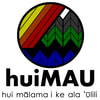Hāmākua i ke ala ʻūlili
Each morning as the sun peaks above the eastern horizon, Hāmākua is the first to be touched by its warmth at the summit of Mauna a Wākea (Maunakea). Unique in its beauty and stature, “Hāmākua kihi loa,” “Hāmākua of the long corner,” (Pukui 1983: 53) stretches across the island’s rugged northeastern coast from its Hilo boundary at Kaʻula gulch near ʻOʻokala to its Kohala boundary at Honokeʻā, and ma uka (towards the uplands) from there to Pōhakuohanalei on the summit of Maunaloa. Unlike any other moku on the island, “Hāmākua ʻāina pali loloa,” “Hāmākua of the tall cliffs,” (KHP April 10, 1862) borders four of the island’s five other moku, and encompasses the summits of the island’s two largest mountains, Maunakea and Maunaloa. Perhaps this is one reason why kūpuna of the area often referred to this moku as “Hāmākua i ka wakawaka,” “irregular and rough Hāmākua,” (Pukui 1983: 53). Regularly quenched by ‘ka ua kīhene lehua,’ ‘the rain that produces clusters of lehua’ (Pukui 1983: 53), and swept by the Aʻeloa wind, the fertile and abundant lands of Hāmākua have long played an important role in the history of Hawaiʻi Nui a Keawe (Pukui 1983: 60).
